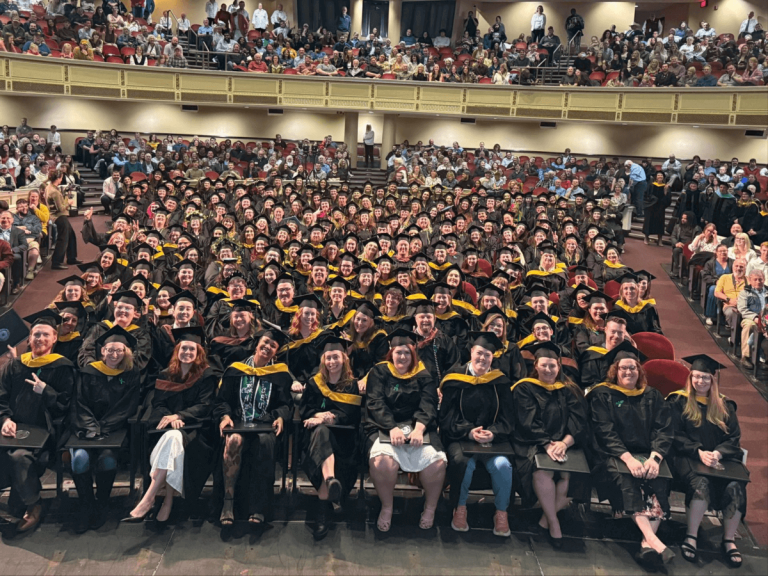
Unity College sees 70% decrease in students borrowing alternative loans while enrollment doubles
With the intention of putting students first by focusing on accessibility, affordability, and flexibility, Unity College broke away from the traditional two-semester higher education model and the results speak for themselves. Data collected in February 2021 shows that, in the same year the College welcomed its largest incoming class and enjoyed its highest enrollment, it also saw students needing to take out fewer alternative loans in both Distance Education and Hybrid Learning – by over 70 percent. This has directly led to the broadest and most racially diverse student population in the College’s history.
“We are glad to see that these new models are working to create access,” says Rachel Kahn, Chief of Staff. “In our roughly 50 year history, Unity College has typically seen between 7%-10% diversity representation in our student population. Today, we are thrilled to see that number increase to nearly 20%. While we certainly have a long way to go in making a Unity College education accessible to all, our new approach has proven to be a step in the right direction.”
“Our augmented model has allowed students to continue their education during these uncertain financial times. Once some of our students return to in-person learning, we understand their financial needs could change. However, we are confident in our ability to adjust with them as part of our intentional effort towards offering an affordable, equitable education for all,” said Unity College President Dr. Melik Peter Khoury
The Path Forward leading to a more affordable educational model
This impressive decrease in alternative loan borrowing by Unity College students is the result of creating higher education models designed to serve today’s college students who seek flexible and affordable options. With a student-first approach, rooted in offering ultimate flexibility, students decide how and when they learn — such as in-person, online, and hybrid models spread out across eight terms per year allowing students to start or take a break as their lives allow. All of this is offered at a reduced real cost of attendance, making Unity College more accessible to a wider audience than ever before.
Unity College’s Path Forward is truly designed with all students in mind. With the understanding that the population of traditional college-age students is shrinking across the country, and those in that group are questioning the value of a private college education and are increasingly debt-averse, it was time for a significant change. By focusing on the needs of prospective students of all ages, first-year students to career changers, parents, and active military members to name a few, the Path Forward lives its ethos by breaking down barriers to access private higher education.
“Access begins with cost,” said Dr. Khoury. “We are not playing the ‘discount game,’ where we present a sticker price and then mark it down for students so that it appears to be a deal. We are charging our tuition based exactly on the resources needed for the course. They are designed to ensure affordability for all students, so that they are truly only paying for what they are taking, without any strings attached.”
Affordable tuition distributed over more term start dates = a more affordable education
“One of the primary struggles that many college students have to worry about is finances,” said Dr. Melik Peter Khoury. “Affordability has limited where students can go to school, or what career path they might choose for decades. Our Path Forward is designed so that Unity College can start making that a thing of the past. By redesigning how we deliver our curriculum, we have gone from the average undergraduate student having to pay roughly $30,000 in two large sums throughout the year, to students paying an average of $11,280 over the course of eight start dates a year. Not only is it a significant decrease in cost, but it also makes it more manageable for students and their families – especially those who either do not have access to such loans or would rather not take them just to live in residence”
Sherry Watson, Director of Student Financial and Enrollment Services at Unity College, said that in previous years funds disbursed were somewhere in the ballpark of $3.5 million in alternative loans. This year, that total is about $1 million, and PLUS loans saw a similar dip in percentage.
Students are taking out fewer loans because they don’t need to
“This tuition strategy has really had a positive impact on our students,” she added. “It’s more manageable, and with the billing broken down into five-week or eight-week terms, along with the percentage of student loan and grant aid to go toward that term, many students are paying just $150 to $200 out-of-pocket every five weeks.”
“It has really been a game changer for our students” said Christopher Vigezzi, Interim Vice President for Distance Education. “Students really like being able to pay as they go. It is one of the reasons students decide to come to Unity College: they find it much more affordable.”
Unity College’s mission, rooted in environmental and sustainability science, is more relevant than ever before. By focusing on creating access to Unity College education for anyone interested in learning to tackle these environmental challenges, regardless of their demographics, Unity College will continue to graduate environmental stewards and leaders for generations to come who are prepared to be the change the world desperately needs.



